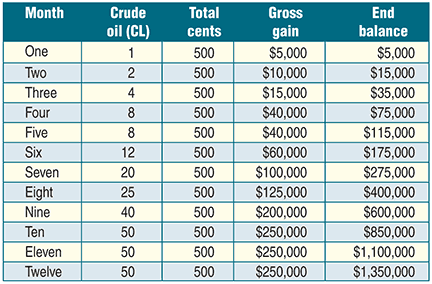TRADING FUTURES
Small Steps For Profit
Straightening The Curves
Consistently making a small profit on one contract is the first step to becoming a successful trader. Here’s a strategy that shows you how to do that using crude oil contracts as an example.
Axioms and clichés have made their way around the trading world for eons. They are now commonly accepted as gospel, and a lot of them are true. But others such as “Trade every signal, take every trade without exception, trade well and profits will follow” are common beliefs that are only partially true at best. The world of swing or trend trading, where entry signals and actual price movements are scattered or limited, is an entirely different world from short-term or intraday trading. Working between the bells of pit or Globex sessions of electronic markets offers numerous potential price swings inside each period of operation.
That said, it is not like anyone can expect to trade every minute of every day with real opportunity all the way. Financial markets only offer a limited amount of profit potential inside any given period of operation.
Long-term cumulative results can be broken down into bell-curve distributions of data. One end of the curve represents low-volatility, limited-range sessions, while the opposite end represents high-volatility, wide-range sessions. That leaves the fat part in the middle, which represents a majority of sessions where price ranges, volume, and volatility levels fall inside some degree of assigned historical norm.
A few sessions from long-term samples will be dull, low-range, and light-volume events. Little opportunity for solid profit potential exists inside those sessions. Trade entry signals confirm with no follow-through of favorable price movement. Those are the days where nothing but chop-and-pop, drift-and-grind tapes wind their way across the screens all session.

Figure 1: making 500 cents consistently. Here you see how making 500 cents on one contract can result in significant profits when you start adding to your position size.